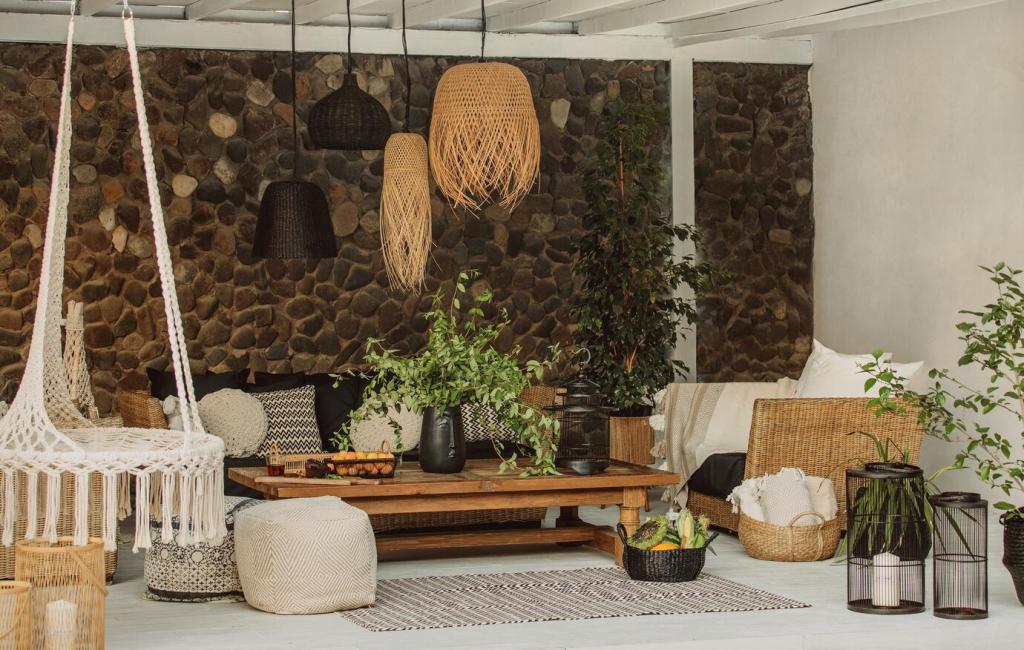
Innovative Use of Natural Materials in Sustainable Design
The pursuit of sustainable design has placed renewed emphasis on harnessing the potential of natural materials. Architects, designers, and engineers are creatively reimagining how materials sourced from nature can contribute not only to aesthetics and functionality, but also to environmental stewardship. Innovative approaches are emerging that prioritize local sourcing, minimal environmental impact, and materials that harmonize with natural ecosystems. This page explores the latest advancements in integrating natural materials into sustainable design practices, highlighting the transformative possibilities of nature’s palette in building a more ecologically responsible future.
Rediscovering Traditional Materials for Modern Solutions
Rammed earth is experiencing a renaissance as a building material. Once prevalent in ancient structures, its ability to regulate indoor temperatures, resist fire, and require only minimal processing makes it exceptionally sustainable. Contemporary architects are embracing advanced techniques, such as stabilizing the earth mixture with natural fibers or lime, which increases strength while preserving eco-friendly characteristics. By using locally sourced soil and minimizing transportation impacts, rammed earth structures become an elegant solution for energy efficiency and low carbon footprints. Modern interpretations of rammed earth walls, with their distinctive striated textures, not only provide functional benefits but also deliver unique visual appeal, seamlessly connecting built environments with their natural surroundings.
Timber remains one of the most versatile and sustainable building materials available. With innovations in engineered wood products like cross-laminated timber (CLT), designers are boldly pushing the boundaries of timber construction, creating high-rise structures and complex forms previously reserved for steel and concrete. The renewability of responsibly managed forests, combined with timber’s natural carbon sequestration capacity, positions it at the forefront of green building. Modern timber technologies also allow for accuracy in prefabrication, reducing waste and maximizing material efficiency. By integrating traditional charm with state-of-the-art engineering, timber now offers compelling solutions for both aesthetic versatility and environmental performance.
Stone has long existed as a foundational building material, admired for its strength and permanence. Recent innovations are enabling the use of stone in more sustainable ways within urban design, such as thin stone veneers or dry-stacking techniques that reduce the need for energy-intensive adhesives. The extraction and shaping of stone have advanced, resulting in minimized processing and waste. Its thermal mass qualities help moderate interior climates, decreasing reliance on artificial heating and cooling. When sourced locally, stone reduces transportation emissions and connects modern architecture to geological history. This renewed appreciation for stone reinforces not only structural integrity but also the unique character of urban environments committed to sustainability.


Biomaterials: Bridging Ecology and Innovation
Mycelium, the root structure of fungi, is being engineered as a building material with remarkable sustainability credentials. Cultivated using agricultural waste, mycelium composites grow into prescribed shapes, forming lightweight, fire-resistant, and biodegradable building blocks. These materials require minimal energy and resources during production. Once their service life ends, mycelium products can safely return to the earth, enhancing soil health rather than leaving persistent waste. Research and development have advanced mycelium’s applications from insulation panels to entire furniture pieces, highlighting the potential for living materials to create adaptable, low-impact interiors and structures that work in harmony with the natural lifecycle.
Building with Indigenous Plant Species
Choosing to build with materials derived from native or regionally appropriate plant species has profound implications for sustainability. Such plants are naturally attuned to local climate conditions and often require fewer interventions during cultivation. When incorporated into structures—be it as load-bearing elements, insulation, or surface finishes—they reflect and reinforce the landscape’s natural rhythms. This fosters habitats for local wildlife and enhances ecological resilience. By giving preference to indigenous materials, designers create buildings and spaces that not only blend visually with their surroundings but also actively support the biological and cultural heritage of the region.
Living Walls and Green Roofs
Living walls and green roofs have risen in popularity as powerful methods for integrating buildings with their surrounding ecosystems. These features use a variety of plants—often selected for their compatibility with local climate and biodiversity needs—to insulate buildings and manage stormwater runoff naturally. They improve air quality, mitigate urban heat islands, and offer habitats for pollinators and other urban wildlife. Carefully designed green infrastructure can reintroduce fragments of nature into dense urban environments, blurring the distinction between the built and natural landscapes. Such integrations not only serve ecological functions but also enhance the mental and physical well-being of building occupants.
Natural Materials and Water Management
Natural materials play a critical role in sustainable water management strategies in architectural and landscape design. Permeable paving made from crushed stone, clay bricks, or natural fiber composites enables rainwater to infiltrate the ground, reducing runoff and recharging groundwater. Reedbeds constructed from native plant species treat greywater effectively, allowing it to be reused in landscaping or agriculture. By utilizing locally sourced materials that complement the hydrological dynamics of a site, designers can devise systems that maintain water cycles and quality, supporting both environmental balance and human needs.
Previous slide
Next slide
